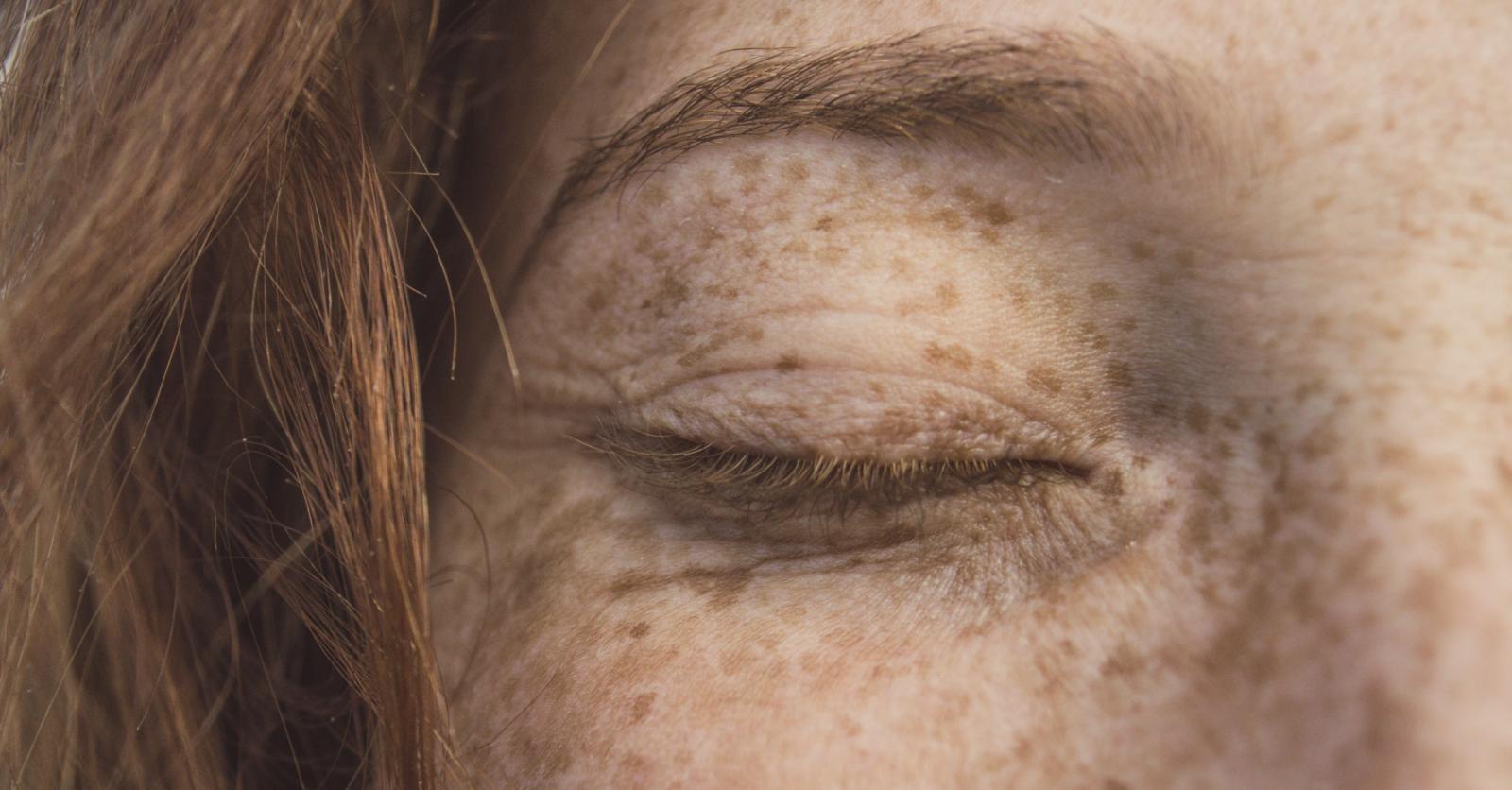Some spots are very happy, others are less welcome and others can be downright dangerous. We help you distinguish the most common spots and tell you what you can do about them.
The types of spots
Brown spots
Freckles: Freckles are small brown spots that are all about the same size and shade. They mainly affect lighter skin types, usually on the face, arms and shoulders.
Hyperpigmentation in the face: These are light to dark brown spots that become more visible in the sun. They are caused by an overproduction of melanin, which causes your skin to tan more in some places.
Many young women suffer from pigment spots or hyperpigmentation due to the sun. Those spots disappear in the winter months and darken during the summer. There may be an underlying cause – for example pregnancy or the type of birth control pill you are taking – but that is not always the case. There is one factor that always plays a role, and that is the sun. If your skin were not exposed to UV radiation, the spots would not be visible. Rubbing your skin well with a high protection factor against the sun is therefore the best way to prevent pigmentation spots.
Birthmarks: Birthmarks are an accumulation of pigment and are darker than sunspots. These spots are benign, but can change and become malignant. As soon as the birthmark takes on a less uniform color or a different shape, it is best to have it checked.
Age warts: These spots are often on top of the skin and feel a bit rougher. They usually appear later in life, but can also begin to develop as early as age 30. They can sometimes look weird and grow larger and more erratic, but are usually benign.
Pink and red spots
Basal cell carcinoma: A difficult name, but one to remember. This is the most common form of skin cancer. Fortunately, this kind of spot is benign and will not metastasize, but it must be removed. It is a pink uneven spot on the skin.
Angioma: This is called ‘cherry angioma’ in English and is a bright red spot that starts as a dot. It is actually just a visible blood vessel and is therefore benign.
You can learn to control
‘We check people who have an increased risk of skin cancer, for example someone with many moles or skin cancer in the family, every year, but we cannot possibly check the entire population every year,’ says dermatologist Dr. Annelies Van Avermaet. ‘That is why we call on you to do a self-check once a month, even if you have few spots. My advice? Take a good look at your entire body and try to get an overview of all your spots. See if anything changes month after month, and as soon as you notice a spot that’s different from the rest, get it checked out by a dermatologist.’
The ABCDE rule is a handy tool to do your self-check. Each letter represents a characteristic that may indicate that a spot is malignant.
A (asymmetry): is the spot asymmetrical?
B (board): does it have irregular borders?
C (colour): has the color changed or different from other spots?
D (diameter): is the diameter larger than 6 mm?
E (evolution): have the size, shape or behavior of the spot evolved over time?
The waiting lists at dermatologists are often very long. If you have a suspicious spot that you’re worried about, it’s best not to walk around with it for too long. Via Skindr you can send in photos and you will be helped by a recognized dermatologist within 48 hours. “If we can see from the pictures that the blemish is not a concern, then we can immediately reassure that person 100%,” explains Dr. Van Avermaet from Skindr. ‘If there is any doubt or if we cannot see it clearly enough, we will make a physical appointment in the short term at one of the practices we work with. With Skindr we have already been able to detect a few melanomas of people who were on a waiting list somewhere to get to the dermatologist.’
Prevent…
Always use a cream with SPF 50 for your face, all year round. Wear a hat or cap to keep your face exposed to the sun as little as possible. A serum or cream with antioxidants (e.g. vitamin C or E) protects your skin against free radicals, reducing the risk of pigment spots and other sun damage. Avoid wounds in your face (no popping pimples!). (Acne) scars can become dark spots due to the sun. Whatever you do, don’t go under the tanning bed. After all, there you are exposed to a high dose of UV radiation in a short time, and you are also lying unprotected under it. The UV index in Belgium is on average below six, while that under tanning beds is twelve. So it is the biggest enemy of pigment spots.
… and healed?
Lubricating a serum or cream with ingredients such as vitamin C, niacinamide, retinoids or azelaic acid can help to even out your skin and make blemishes less visible. Cream with hydroquinone is available on prescription and works on the basis of vitamin A acid, which bleaches stains. A chemical peel or fruit acid peel can also help to combat pigmentation. You can have it done professionally or you can exfoliate weekly at home with glycolic or salicylic acid. A laser treatment is a more intensive but also more expensive way to treat hyperpigmentation. You usually need several treatments for this.
Read also:
2023-08-05 10:08:06
#spots #skin

